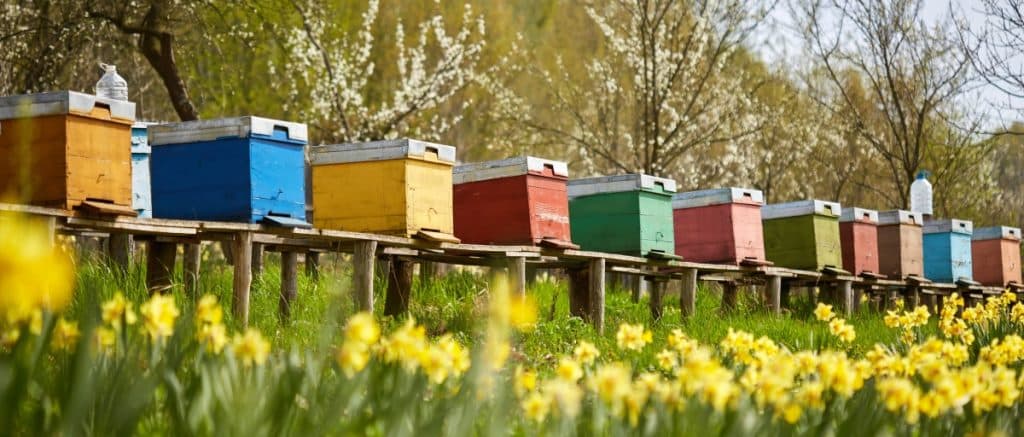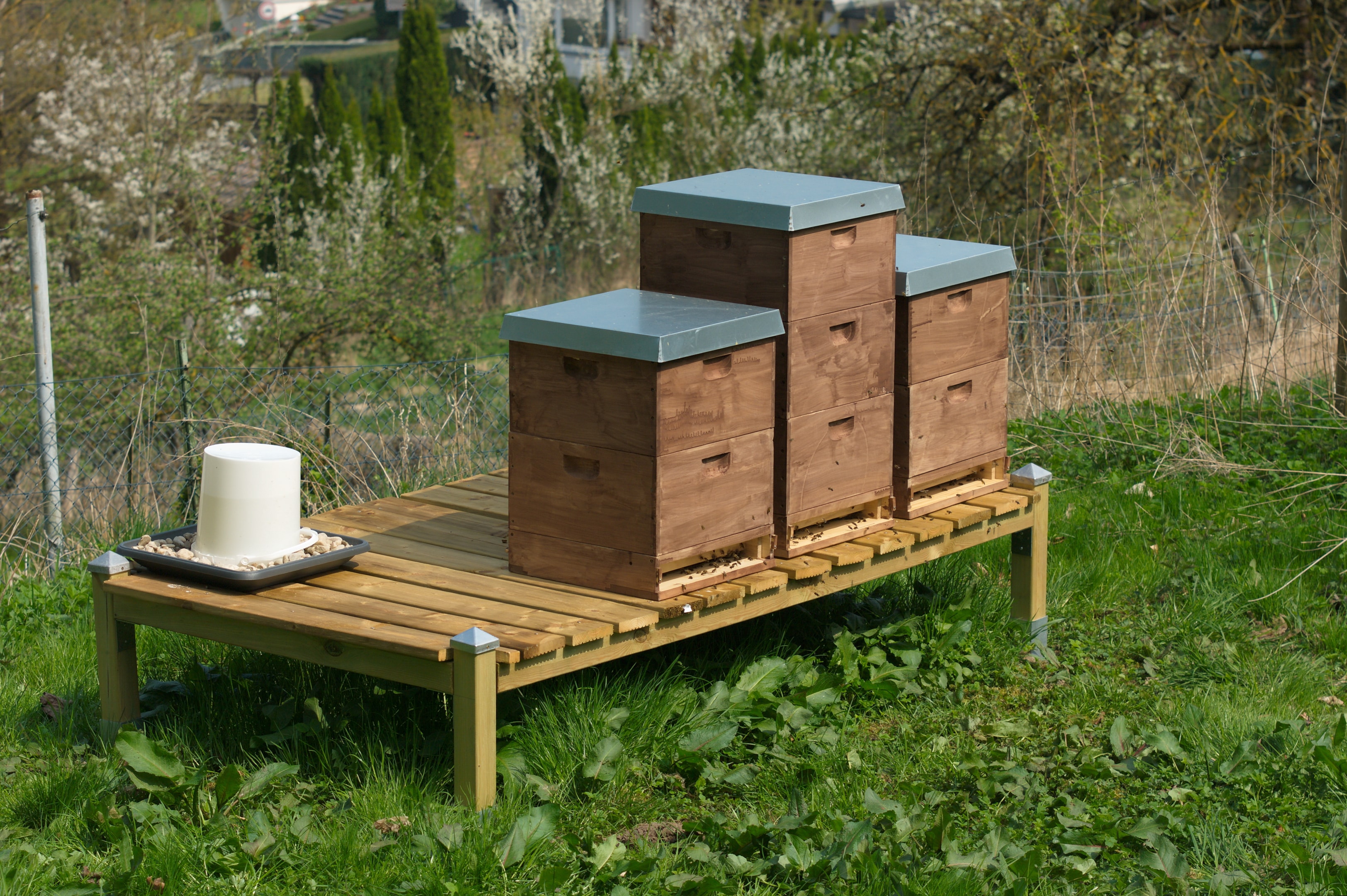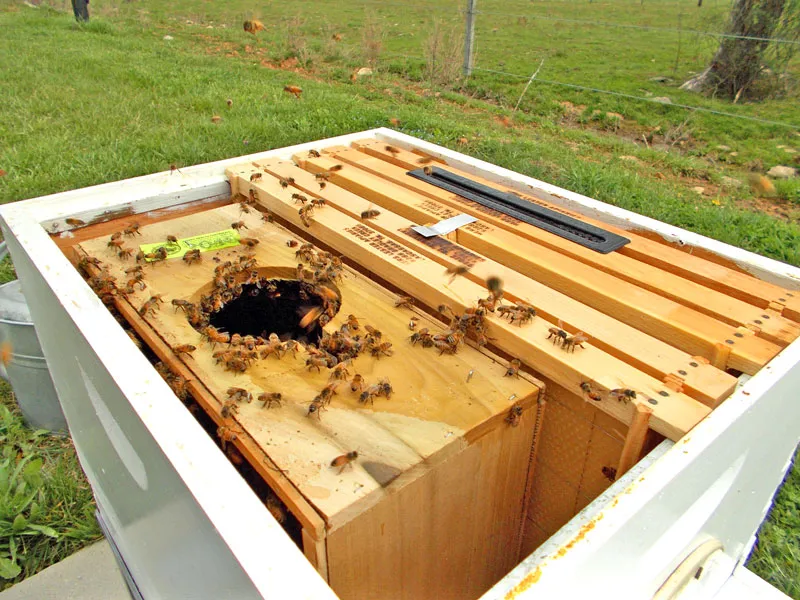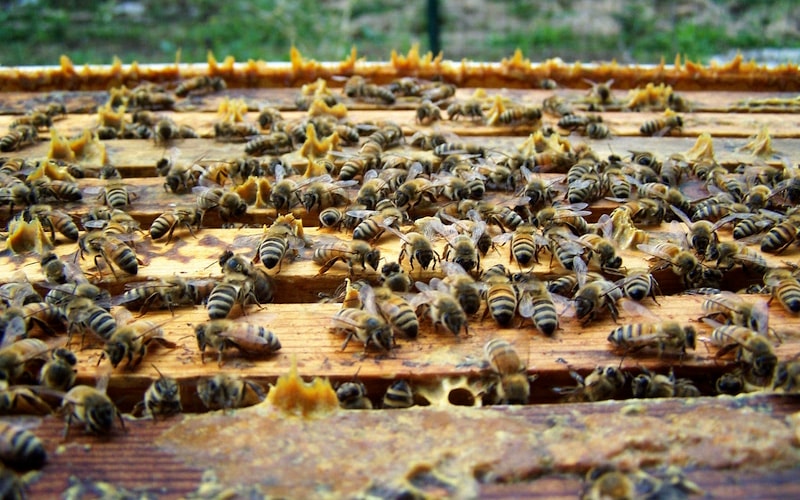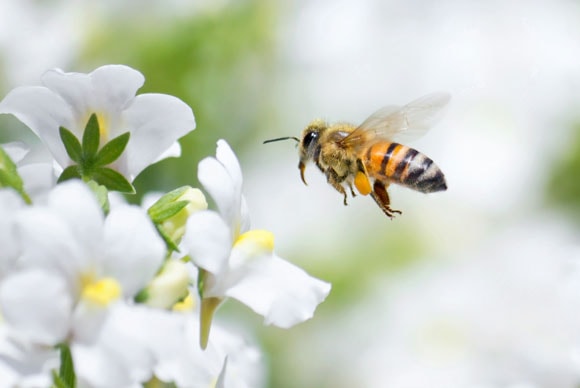Beekeeping, also known as apiculture, is the practice of humans in maintaining bee colonies in hives. It involves the care, management, and study of bees, primarily for honey production and other byproducts, but also for pollination services. Beekeeping can be a fulfilling hobby, a part-time endeavor for extra income, or a full-scale commercial enterprise. This comprehensive guide will delve into what beekeeping entails, the different types of beekeepers, and the steps you can take to become a successful beekeeper.
What Does a Beekeeper Do?
A beekeeper, sometimes referred to as an apiarist, apiculturist, bee farmer, or honey farmer, is responsible for managing colonies of honeybees (Apis mellifera) kept in hives. Beekeepers typically keep honeybees for honey production and other byproducts such as beeswax, royal jelly, and pollen. They may also keep bees for pollination services, which are essential for the productivity of various crops.
Daily and Seasonal Tasks
The tasks of a beekeeper can vary widely depending on the season and the specific needs of their colonies. Here are some general activities that beekeepers engage in:
- Maintaining Beekeeping Equipment: This includes assembling and repairing hives, frames, and other tools.
- Inspecting Hives and Bees: Regular inspections are crucial to ensure the health of the bees and the queen, as well as to check for diseases, pests, and overall hive productivity.
- Managing Surrounding Land: Beekeepers often manage the flora around their apiaries to ensure ample forage for their bees.
- Treating for Diseases and Pests: Common issues include varroa mites, small hive beetles, and wax moths. Beekeepers use various treatments and management practices to keep these threats under control.
- Collecting and Processing Honey and Other Products: This involves harvesting honey, extracting it from the comb, and processing it for sale or personal use. Other products like beeswax, pollen, and propolis may also be collected.
- Administrative Tasks: Record-keeping, report writing, and other administrative duties are essential for tracking the health and productivity of hives and complying with regulations.
- Following Food Safety and Hygiene Guidelines: Ensuring that honey and other bee products are collected and processed hygienically is crucial for food safety.
Interaction with External Stakeholders
Beekeepers often work with a variety of external stakeholders, including:
- Customers: Selling honey and other bee products directly to consumers.
- Suppliers: Purchasing beekeeping equipment, treatments, and feed.
- Delivery/Collection Companies: Logistics for moving hives or products.
- Landowners and Farmers: Securing locations for apiaries and ensuring good relations with neighboring landowners.
- Regulatory Authorities: Complying with regulations set by bodies such as the Local Authority Environmental Health Officers (EHOs), Trading Standards Officers (TSOs), Veterinary Medicines Directorate (VMD), and the Animal and Plant Health Agency (APHA).
- Beekeeping Associations: Networking, education, and advocacy through local and national beekeeping organizations.
Types of Beekeepers
Beekeepers can be broadly categorized based on their level of involvement and the scale of their operations. Here are the main types of beekeepers:
Hobby Beekeepers
Most beekeepers fall into this category. Hobby beekeepers maintain a small number of hives and primarily engage in beekeeping for personal enjoyment and small-scale honey production. They may also be motivated by a desire to help honeybee populations and contribute to local pollination.
Why Become a Hobby Beekeeper?
- Environmental Impact: Honeybees are crucial pollinators, and keeping bees can help support local ecosystems. By maintaining hives, hobby beekeepers contribute to the health and diversity of local flora.
- Gardening Benefits: Bees improve the productivity of fruit trees and gardens. Their pollination activities can lead to larger yields and more vibrant plant growth.
- Personal Fulfillment: Beekeeping is a rewarding and educational hobby. It offers a unique opportunity to learn about bee behavior, ecology, and the natural world. Many hobbyists find great joy in observing their bees and harvesting their honey.
- Community: Hobby beekeepers often join local clubs and associations, providing opportunities for social interaction and learning. These groups offer support, resources, and a sense of camaraderie among beekeepers.
Hobby beekeeping is an excellent way to start for those who are new to the practice. It allows individuals to learn at their own pace without the pressure of large-scale operations.
Sideline (Non-Commercial) Beekeepers
Sideline beekeepers operate on a slightly larger scale than hobbyists and may maintain a few dozen hives. They often sell honey and other bee products for extra income but do not rely on it as their sole source of livelihood.
Why Become a Sideline Beekeeper?
- Supplemental Income: Selling honey and other products can provide a significant secondary income. This can be especially beneficial for those looking to supplement their main source of income.
- Scalable Hobby: As skills and experience grow, sideline beekeepers can expand their operations gradually. This scalability allows beekeepers to increase their hive count and production capacity as they become more proficient.
- Flexibility: Beekeeping can be balanced with other full-time jobs or responsibilities. Sideline beekeepers can manage their hives in their spare time, making it a flexible and manageable endeavor.
Sideline beekeeping offers a middle ground between hobby and commercial operations. It allows beekeepers to explore the economic potential of beekeeping without committing to it as a full-time profession.
Commercial Beekeepers
Commercial beekeepers manage large-scale operations, often with hundreds or thousands of hives. They rely on beekeeping as their primary source of income and may provide pollination services to farmers, produce honey in bulk, and sell other bee products on a large scale.
Why Become a Commercial Beekeeper?
- Profitability: With the right skills and market, commercial beekeeping can be a profitable business. Large-scale honey production and pollination services can generate substantial revenue.
- Pollination Services: Providing essential pollination services to agriculture can be lucrative. Many commercial beekeepers transport their hives to different locations to pollinate crops, charging farmers for this service.
- Large-Scale Production: The ability to produce and sell large quantities of honey and other products. Commercial beekeepers can meet the demands of larger markets and supply chains, increasing their business opportunities.
Commercial beekeeping requires significant investment in time, resources, and knowledge. However, for those who are passionate about beekeeping and willing to take on the challenges, it can be a highly rewarding profession.
The Path to Becoming a Beekeeper
Regardless of the scale, all beekeepers share a common passion for bees and a commitment to their care. Here are the steps to becoming a beekeeper:
1. Start Small: Begin with a few hives to learn the basics of beekeeping. This allows you to gain experience and understand the intricacies of hive management without being overwhelmed.
2. Educate Yourself: Take courses, read books, and join local beekeeping associations. Continuous education is crucial for staying updated on best practices and new developments in the field.
3. Invest in Quality Equipment: High-quality equipment ensures the safety and efficiency of your beekeeping operations. Invest in protective clothing, hives, smokers, and hive tools.
4. Monitor and Manage your apiary: Regularly inspect your hives to monitor the health of your bees. Look for signs of disease, pests, and overall hive activity. Effective management practices are key to maintaining healthy and productive colonies.
5. Network with Other Beekeepers: Join local clubs and online forums to connect with other beekeepers. Networking provides support, advice, and opportunities to share experiences and knowledge.
6. Expand Gradually: As you become more experienced, gradually increase the number of hives. Expanding your operation at a manageable pace allows you to refine your skills and build a sustainable beekeeping business.
7. Adapt and Innovate: Stay adaptable and open to new methods and technologies. Beekeeping is an evolving field, and innovation can lead to more efficient and productive practices.
8. Enjoy the Journey: Beekeeping is a rewarding and enriching experience. Enjoy the process of learning and growing as a beekeeper, and take pride in contributing to the health of the environment and the production of honey.
By following these steps, aspiring beekeepers can build a solid foundation for their beekeeping journey, whether as hobbyists, sideline beekeepers, or commercial operators. Each type of beekeeper plays a vital role in supporting honeybee populations and promoting the benefits of beekeeping to the broader community.
Steps to Becoming a Beekeeper
Whether you aim to be a hobbyist, sideline beekeeper, or commercial operator, the following steps will help you get started on your beekeeping journey.
Educate Yourself
Before acquiring bees or equipment, it's crucial to educate yourself about beekeeping. Here are some ways to get started:
- Books and Online Resources: There are many excellent books, websites, and online courses dedicated to beekeeping. Look for resources that cover the basics of bee biology, hive management, and common issues.
- Beekeeping Associations: Joining a local beekeeping association can provide valuable resources, mentorship, and support. Many associations offer beginner courses and workshops.
- Hands-On Experience: If possible, spend time with an experienced beekeeper. Hands-on learning can provide insights that you won't get from books or videos alone.
Acquire Beekeeping Equipment
Investing in the right equipment is essential for successful beekeeping. Here are some basic items you'll need:
- Beehives: The Langstroth hive is the most common type, but there are also top bar and Warre hives. Each type has its pros and cons, so choose the one that best fits your needs and preferences.
- Protective Clothing: A veil, gloves, and a full suit are essential to protect yourself from stings.
- Smoker: A smoker helps calm the bees during inspections.
- Hive Tool: This multipurpose tool is used to pry open hives, scrape away wax, and perform various tasks within the hive.
- Feeder: Feeders are used to provide sugar syrup or other supplements to your bees, especially during times of nectar scarcity.
Choose a Location for Your Hives
Selecting a suitable location for your hives is critical for the success of your beekeeping operation. Consider the following factors:
- Sunlight: Bees prefer sunny locations. Place your hives where they will receive morning sun to help them start foraging early.
- Wind Protection: Shield your hives from strong winds by placing them near natural windbreaks like trees or shrubs.
- Water Source: Bees need water for hydration and cooling the hive. Ensure there is a nearby water source or provide a water feeder.
- Forage: Ensure there is ample forage in the vicinity. Bees need a variety of flowers to collect nectar and pollen.
- Accessibility: Make sure the location is easily accessible for regular inspections and maintenance.
Acquire Bees
You can acquire bees in several ways:
- Package Bees: These are sold by weight and include a queen and several thousand workers. They are typically shipped in ventilated containers.
- Nucleus Colony (Nuc): A nuc is a small, established colony with a queen, workers, brood, and honey stores. Nucs are easier to establish than packages but can be more expensive.
- Swarms: Capturing a swarm is another way to acquire bees, but it requires experience and knowledge.
- Buying Established Hives: Some beekeepers sell entire established hives, which can be a good option for beginners.
Install Your Bees
Once you have acquired your bees, you'll need to install them in their new home. Follow these steps:
- Preparation: Set up your hive in the chosen location, ensuring it is level and secure. Have all your equipment ready, including the smoker and protective clothing.
- Installing Package Bees: Open the package and gently shake the bees into the hive. Place the queen cage in the hive, making sure the workers can access her. Close the hive and monitor it closely for the first few days.
- Installing a Nuc: Simply transfer the frames from the Nuc box to your hive, ensuring you keep the frames in the same order. Place the nuc frames in the center of the hive body and add additional frames as needed.
Monitor and Maintain Your Hives
Regular inspections are crucial for maintaining healthy and productive hives. Here are some key tasks:
- Weekly Inspections: Check for signs of queen activity, such as eggs and larvae. Monitor the brood pattern and overall health of the colony.
- Pest Management: Look for signs of pests such as varroa mites, small hive beetles, and wax moths. Use appropriate treatments and management practices to keep these pests under control.
- Feeding: Provide supplemental feeding if necessary, especially during times of nectar scarcity. This can include sugar syrup, pollen patties, or fondant.
Honey Harvesting: When the honey frames are fully capped, it's time to harvest. Use a bee escape board or a fume board to clear the bees from the honey super, then extract the honey using an extractor.
Expand Your Knowledge and Skills
Beekeeping is a lifelong learning process. Continuously educate yourself and seek out opportunities to expand your knowledge and skills:
- Advanced Courses and Workshops: Many beekeeping associations offer advanced courses and workshops on specific topics such as queen rearing, pest management, and honey processing.
- Networking: Join beekeeping forums, attend conferences, and participate in local beekeeping events to network with other beekeepers and share knowledge.
- Research and Innovation: Stay informed about the latest research and innovations in beekeeping. Subscribe to beekeeping journals and follow reputable beekeeping blogs.
Challenges and Rewards of Beekeeping
Beekeeping can be both challenging and rewarding. Here are some common challenges and the rewards that make it all worthwhile:
Challenges
- Pest and Disease Management: Keeping pests and diseases under control requires constant vigilance and knowledge of effective treatments.
- Weather and Climate: Weather conditions can greatly affect bee behavior and hive productivity. Extreme weather events can pose significant challenges.
- Financial Investment: Starting and maintaining a beekeeping operation can be costly. Beekeepers need to budget for equipment, bees, treatments, and other expenses.
- Physical Demands: Beekeeping can be physically demanding, requiring lifting heavy hive boxes and working in various weather conditions.
- Regulatory Compliance: Beekeepers must comply with local and national regulations regarding hive management, honey production, and disease control.
Rewards
- Honey Production: Harvesting and enjoying your honey is one of the most satisfying rewards of beekeeping.
- Environmental Impact: Beekeepers play a crucial role in supporting local ecosystems and biodiversity through pollination services.
- Personal Fulfillment: Beekeeping is a deeply rewarding hobby that provides a sense of accomplishment and connection with nature.
- Community: Beekeepers often form close-knit communities, sharing knowledge, experiences, and mutual support.
- Educational Opportunities: Beekeeping provides endless opportunities for learning and personal growth. It also offers a platform to educate others about the importance of bees and sustainable practices.
Conclusion
Beekeeping is a journey that requires dedication, education, and hands-on experience. Whether you are interested in beekeeping as a hobby, a part-time endeavor, or a full-scale commercial operation, the steps outlined in this guide will help you get started and succeed in your beekeeping journey. By understanding the role of a beekeeper, acquiring the necessary equipment, selecting a suitable location, and continuously expanding your knowledge, you can enjoy the numerous rewards that beekeeping has to offer. Embrace the challenges and joys of beekeeping, and contribute to the well-being of honeybees and the environment.
